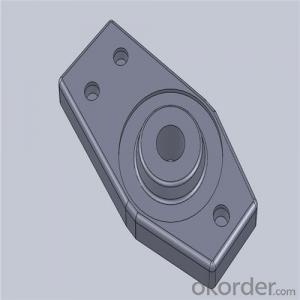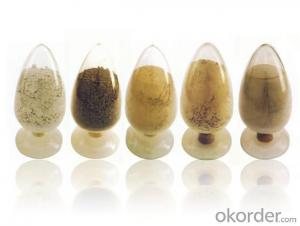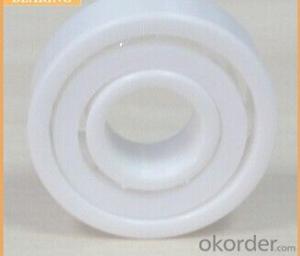Monolithic Refractories Magnesium Calcium Gunning for Ladle and Tundish for Iron and Steel Industry
- Loading Port:
- China Main Port
- Payment Terms:
- TT or L/C
- Min Order Qty:
- 2 MT m.t.
- Supply Capability:
- 5000 Tons Per Month m.t./month
OKorder Service Pledge
OKorder Financial Service
You Might Also Like
General Information of Magnesium Calcium Gunning for Ladle and Tundish
Made as per international standards, ALRE magnesium calcium gunning forladle and tundish is known for its excellent corrosion resistance, long operating life and high refractoriness.
Technical data of Magnesium Calcium Gunning for Ladle and Tundish
Item | Magnesium Calcium Gunning | |||
CPL-1 | CPL-2 | |||
Al2O3(%)≥ | — | — | ||
MgO(%)≥ | 75-80 | 70-80 | ||
CaO(%)≤ | 5-10 | 2-10 | ||
SiO2(%)≤ | 4 | 10 | ||
SiO2+ Fe2O3+ Al2O3(%)≥ | ||||
Bulk Density (g/cm3)≥ | — | — | ||
C.C.S. (MPa) ≥ | 110℃×24hrs | — | — | |
1500℃×3hrs | — | — | ||
M.O.R.(MPa) ≥ | 110℃×24hrs | — | — | |
1500℃×3hrs | — | — | ||
Refractoriness (℃) ≥ | 1790 | 1790 | ||
Grain Size (mm) ≤ | — | — | ||
Permanent Linear Change(%) | 1500℃×2hrs | — | — | |
1500℃×3hrs | — | — | ||
Life time (hr) | — | — | ||
Production line and Packing of Magnesium Calcium Gunning for Ladle and Tundish


Feature of Magnesium Calcium Gunning for Ladle and Tundish
Long operating life
High refractoriness
Excellent corrosion resistance
Application of Magnesium Calcium Gunning for Ladle and Tundish
ALRE magnesium calcium gunning forladle and tundish can be used widely in steel and iron industry.
- Q: How do monolithic refractories improve the efficiency of reheating furnaces in steel plants?
- The efficiency of reheating furnaces in steel plants is greatly improved by the use of monolithic refractories. Specifically designed to withstand high temperatures and harsh conditions, these refractories are an ideal choice for steel plants. One important way in which monolithic refractories enhance furnace efficiency is by decreasing heat loss. With their excellent insulation properties, these refractories minimize the transfer of heat from the furnace to its surroundings. As a result, less energy is wasted and the furnace can maintain its desired temperature more effectively. Furthermore, monolithic refractories contribute to a more uniform and controlled distribution of heat within the furnace. They can be easily shaped and installed to create a seamless lining, ensuring that heat is evenly spread throughout the furnace chamber. This even distribution of heat eliminates any hotspots or cold spots, resulting in a more efficient heating process. Another crucial role of monolithic refractories is reducing downtime and maintenance requirements. Unlike traditional brick linings, which are prone to cracking and erosion, monolithic refractories offer superior resistance to wear and tear. This increased durability reduces the need for frequent repairs and replacements, allowing for uninterrupted furnace operation and increased overall efficiency. Moreover, monolithic refractories help improve energy efficiency by decreasing fuel consumption. The superior insulation properties of these refractories help retain heat within the furnace, reducing the amount of energy needed to maintain the desired temperature. This leads to significant energy savings for steel plants, as less fuel is required to achieve the same heating results. In conclusion, the efficiency of reheating furnaces in steel plants is significantly enhanced by the use of monolithic refractories. These refractories reduce heat loss, ensure uniform heat distribution, minimize downtime and maintenance, and decrease fuel consumption. By incorporating these refractories into their furnace linings, steel plants can increase productivity, reduce energy costs, and improve overall operational efficiency.
- Q: How do monolithic refractories prevent slag penetration?
- Monolithic refractories prevent slag penetration by forming a dense and continuous protective layer on the surface of the refractory material. This layer acts as a barrier, preventing the molten slag from infiltrating and damaging the refractory.
- Q: How are monolithic refractories installed and repaired in iron and steel applications?
- To ensure optimal performance and longevity in iron and steel applications, specific procedures are employed for the installation and repair of monolithic refractories. The installation process typically involves the following steps: 1. Proper surface preparation is crucial. This entails removing loose material, dirt, and dust to create a smooth and clean substrate that facilitates good adherence of the refractory material. 2. The refractory material, supplied as dry powders or granules, is mixed with water or a specific bonding agent according to the manufacturer's instructions to achieve the desired properties. 3. The mixed refractory material is then applied to the prepared surface using techniques such as troweling, spraying, or casting, depending on the installation requirements and the type of monolithic refractory. 4. Curing is necessary to maximize the strength and durability of the refractory material. The curing process can involve air drying, heat treatment, or a combination of both, in accordance with the specific refractory material's recommendations. When it comes to repairing monolithic refractories in iron and steel applications, the following steps are generally followed: 1. Thorough assessment of the damaged area or component is conducted to determine the extent of the damage and the appropriate repair method. 2. The damaged monolithic refractory material is carefully removed using suitable tools and techniques while ensuring the underlying substrate remains intact. 3. Similar to the installation process, the surface where the repair will take place is cleaned and prepared by removing any loose material, dirt, and dust. 4. The repair material, typically the same or similar to the original monolithic refractory, is mixed and applied to the damaged area. The application method may vary depending on the nature of the repair and the specific requirements of the refractory material. 5. The repaired area is properly cured and inspected to ensure the quality and effectiveness of the repair, following the manufacturer's guidelines for curing and post-repair inspection procedures. In conclusion, the meticulous execution of surface preparation, proper mixing and application of refractory material, and appropriate curing procedures are essential for the installation and repair of monolithic refractories in iron and steel applications. These steps guarantee reliable and durable refractory linings, which are vital for the efficient operation of iron and steel processes.
- Q: What are the common testing methods used to evaluate the performance of monolithic refractories?
- The common testing methods used to evaluate the performance of monolithic refractories include thermal conductivity testing, hot modulus of rupture testing, abrasion resistance testing, thermal shock resistance testing, and corrosion resistance testing.
- Q: What are the typical compositions of monolithic refractories?
- Typically, monolithic refractories consist of a combination of aggregates, binders, and additives. Aggregates, such as alumina, magnesia, or silicon carbide, provide the main refractory properties and are chosen based on the desired characteristics of the refractory, such as resistance to high temperatures, thermal shock, or chemical attack. To bind the aggregates together and give the refractory its shape and strength, binders are used. Common binders include clay, calcium aluminate cement, or colloidal silica. The binder also impacts the overall performance of the refractory, affecting properties like thermal conductivity and chemical resistance. Additives are often included in the composition of monolithic refractories to improve specific properties or facilitate the processing. These additives can be plasticizers, which enhance workability and make installation easier, or antioxidants, which enhance the refractory's resistance to oxidation. Ultimately, the specific composition of a monolithic refractory can vary depending on the intended application and desired performance characteristics. Different combinations of aggregates, binders, and additives can be customized to meet specific temperature ranges, chemical environments, or mechanical stresses.
- Q: How do monolithic refractories help in enhancing the durability of iron and steel equipment?
- Monolithic refractories play a vital role in increasing the durability of iron and steel equipment. They offer high resistance to extreme temperatures, chemical attack, and mechanical wear. Unlike traditional brick or castable refractories, monolithic refractories are made from a single, uniform material, making them stronger and more reliable. The ability of monolithic refractories to withstand high temperatures is crucial in iron and steel manufacturing processes. They can endure temperatures above 3000°F (1650°C) without losing their structural integrity, preventing premature equipment failure. This thermal resistance helps maintain the shape and structure of the refractory lining, ensuring efficient and consistent equipment performance. In addition to their heat resistance, monolithic refractories also possess excellent chemical resistance. This is important because iron and steel equipment often comes into contact with corrosive substances like molten metal, slag, and various chemicals. The ability of monolithic refractories to resist chemical attack prevents degradation and erosion of the equipment's lining, extending its lifespan. Moreover, monolithic refractories provide exceptional mechanical strength and wear resistance. The equipment is constantly exposed to abrasive materials, physical impacts, and mechanical stress, which can cause severe damage. However, the dense and compact structure of monolithic refractories makes them highly resistant to mechanical wear, minimizing the risk of erosion and spalling. The flexibility and versatility of monolithic refractories further enhance the durability of iron and steel equipment. They can be easily molded, shaped, and installed in complex geometries, ensuring a tight and precise fit. This eliminates the formation of gaps or weak points, which could result in thermal or chemical leakage, reducing the risk of equipment failure. In conclusion, the use of monolithic refractories significantly improves the durability of iron and steel equipment. They offer exceptional resistance to high temperatures, chemical attack, and mechanical wear. By ensuring the longevity and reliability of the equipment, monolithic refractories enhance operational efficiency and cost-effectiveness in the iron and steel industry.
- Q: Can monolithic refractories be customized for specific iron and steel processing requirements?
- Yes, monolithic refractories can be customized for specific iron and steel processing requirements. Monolithic refractories are versatile and can be tailored to meet the specific needs of different processing techniques such as iron and steel production. They can be formulated with different materials, densities, and compositions to withstand high temperatures, resist corrosion, and provide optimal thermal insulation. This customization ensures that the refractories effectively protect the equipment and enhance the efficiency and productivity of iron and steel processing operations.
- Q: How are monolithic refractories installed in iron and steel production processes?
- Monolithic refractories are installed in iron and steel production processes by first preparing the surface, then applying the refractory material in a plastic or semi-plastic state. This can be done through various methods such as gunning, casting, ramming, or spraying. After the installation, the refractory material is allowed to cure and harden, forming a durable lining that can withstand high temperatures and harsh conditions in the production processes.
- Q: How do monolithic refractories contribute to the safety of iron and steel plants?
- Monolithic refractories play a crucial role in enhancing the safety of iron and steel plants. These refractories are designed to withstand extreme temperatures, thermal shocks, and chemical reactions, making them highly resistant to the harsh conditions within the plants. By providing a strong and durable lining for furnaces, ladles, and other equipment, monolithic refractories prevent leaks, cracks, and failures that could lead to accidents, such as molten metal spills or explosions. Their ability to effectively contain heat and protect against wear and tear ensures the structural integrity of the plants, minimizing the risk of equipment failure and potential hazards.
- Q: How are monolithic refractories installed and repaired in iron and steel production facilities?
- Monolithic refractories play a crucial role in iron and steel production facilities by offering insulation and protection against high temperatures, chemical corrosion, and mechanical wear. To install and repair these refractories, careful planning, expertise, and adherence to safety protocols are necessary. To begin installation, the surface must be prepared by eliminating loose material and cleaning the area thoroughly. This step guarantees proper adhesion of the refractory material and may also involve roughening or texturing the surface for better bonding. Next, a workable consistency is achieved by mixing the monolithic refractory material with water or a binder. The material is then applied to the prepared surface using techniques like casting, gunning, ramming, or troweling. The choice of application method depends on factors such as the type of refractory material, repair area, and desired outcome. During installation, it is vital to carefully follow the manufacturer's instructions regarding mixing ratios, curing times, and drying temperatures. Improper installation can result in reduced refractory performance, premature failure, and safety hazards. Repairing monolithic refractories in iron and steel production facilities is an ongoing process due to the harsh operating conditions and mechanical stresses they endure. It is crucial to promptly address any signs of damage or wear to prevent further deterioration. The first step in the repair process is to assess the extent of the damage. This can be achieved through visual inspection, thermal imaging, or non-destructive testing techniques. Once the damage is identified, the appropriate repair method can be determined. Minor repairs can often be accomplished using patching materials that have a composition similar to the original refractory. These materials are mixed with water or a binder to form a paste, which is then applied to the damaged area and allowed to cure. For more extensive repairs, the damaged refractory material may need to be completely removed using mechanical methods like chipping, grinding, or cutting. After removing the damaged material, the surface is prepared as mentioned earlier, and new refractory material is installed using the appropriate application method. It is important to note that the repair process should be carried out by trained personnel with expertise in refractory installation and repair. Safety precautions, such as wearing protective clothing, using proper tools, and following established procedures, should always be observed. In conclusion, the installation and repair of monolithic refractories in iron and steel production facilities necessitate careful planning, adherence to manufacturer's instructions, and expertise in refractory materials. By following proper procedures and promptly addressing any damage, these facilities can ensure the longevity and efficiency of their refractory linings, ultimately contributing to the smooth operation of their production processes.
1. Manufacturer Overview
| Location | Henan, China |
| Year Established | 2007 |
| Annual Output Value | Above US$ 200 Million |
| Main Markets | North America;Asia;Western Europe;Africa;Russia;Middle East |
| Company Certifications | ISO 9001:2008 |
2. Manufacturer Certificates
| a) Certification Name | |
| Range | |
| Reference | |
| Validity Period |
3. Manufacturer Capability
| a) Trade Capacity | |
| Nearest Port | Tianjin |
| Export Percentage | 20% - 30% |
| No.of Employees in Trade Department | 10-20 People |
| Language Spoken: | English; Chinese |
| b) Factory Information | |
| Factory Size: | Above 150,000 square meters |
| No. of Production Lines | Above 10 |
| Contract Manufacturing | Installation guide, OEM Service Offered |
| Product Price Range | High; Average |
Send your message to us
Monolithic Refractories Magnesium Calcium Gunning for Ladle and Tundish for Iron and Steel Industry
- Loading Port:
- China Main Port
- Payment Terms:
- TT or L/C
- Min Order Qty:
- 2 MT m.t.
- Supply Capability:
- 5000 Tons Per Month m.t./month
OKorder Service Pledge
OKorder Financial Service
Similar products
Hot products
Hot Searches
Related keywords



























